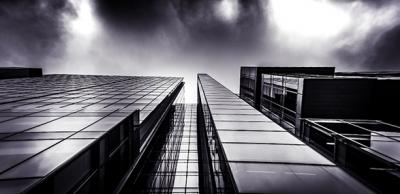LABC Grenfell Tower update
All those working in building control have been deeply shocked by the tragedy at Grenfell Tower and the terrible unexpected extent of the fire raises fundamental questions for all professionals. Our hearts go out to the residents, the bereaved and everyone else involved in the event and aftermath.
You will have read and heard reports within the media of fire tests being undertaken on building materials and in particular rain screen external wall systems using aluminium composite material (ACM) panels. Of the seven full scale tests carried out so far, only 3 have met the test criteria required.
All of the test reports can be found at the DCLG website view on the DCLG website here.
There has been rapid industry-wide cooperation to identify any other buildings that could be at risk with the information being gathered and shared from many different sources. Guidance has been issued by DCLG Advice for building owners: large-scale wall system test 3 on what should be done.
This has then been shared with individual local authorities, housing associations, property owners, building control bodies and other professional advisors to help decide on the best way forward for building owners and residents.
The Public Inquiry has now commenced and the government has also announced an independent review of building regulations and fire safety chaired by Dame Judith Hackitt. Work is already underway on this.
The DCLG have set up the Building Safety Programme for landlords, housing associations and local authorities to help identify buildings of concern.
You can sign up to receive regular updates here.
View the latest updates and statements on Grenfell and its aftermath on our website and we will endeavour to keep you up to date with further guidance, information or advice as and when it becomes available.
The Building Control Alliance represents The Building Control sector and DCLG observers Local Authority Building Control, private sector Approved Inspectors, Chartered Institute of Building, Chartered Association of Building Engineers and the Royal Institution of Chartered Surveyors.
Sign up to the building bulletin newsletter
Over 48,000 construction professionals have already signed up for the LABC Building Bulletin.
Join them and receive useful tips, practical technical information and industry news by email once every 6 weeks.
Subscribe to the Building Bulletin


Comments
Surprised
Submitted 6 years 6 months ago
I have never been a fan of upvc building products, and to me these played a significant part in the spread of the fire. Not only will they burn ferociously once ignited, but they distort quickly when heated and fail to stay in place and prevent fire from spreading. In this case allowing the fire from the burning cladding to enter the flats from outside
I agree
Submitted 6 years 6 months ago
That said, there was clearly a malfunction in the fire resistance of the buildings' cladding system, fire stopping, insulation, panel manufacture and the whole system of construction of the external building fabric. I assume the cladding was retro fit in order to increase the building's conservation of heat. I think the education of the latest generations arriving in the industry needs to return to basics starting with good construction practice and detailing. Some of the retro fit solutions I have seen beggar belief.
I agree
Submitted 6 years 6 months ago
I am also concerned that the contribution to the fire of burning plastics does not seem to have come up yet. Many residents complained of choking black smoke which is most likely to have arisen from burning insulation, windows and the polythene cores in the cladding. At high enough temperatures the aluminium itself can also burn.
Windows
Submitted 6 years 6 months ago
It could be another disastrous piece of decision making.
Sprinklers
Submitted 6 years 6 months ago
Fire spread
Submitted 6 years 6 months ago
Regardless of the cause of the fire and the performance of the cladding components, I still do not understand why the fire was able to spread and was not contained within the flat for a much longer period. Once it 'broke out' of the flat locally into the gap between the new and original cladding it was clearly going to spread rapidly. It would also appear that horizontal fire breaks at each floor level were either ineffective or non existent.
We are all looking for answers and some of the early speculation has been unhelpful.
I understand there are some 400+ fires in accommodation each year, but they are largely contained for sufficient time to allow the fire service to prevent an impact upon adjoining dwellings. It is the rapid spread of fire that was so very serious at Grenfell Tower and surely a primary cause of such devastating loss of life.
SF
Evacuation
Submitted 6 years 6 months ago
Gap
Submitted 6 years 6 months ago
Building regulations
Submitted 6 years 6 months ago
Added to which most of the Building Control Officers I have been involved with are hard working conscientious people who are struggling to keep on top of their current work load without having to cope with keeping abreast with the ever changing regulations.
Sprinklers
Submitted 6 years 6 months ago
Ychwanegu sylw newydd